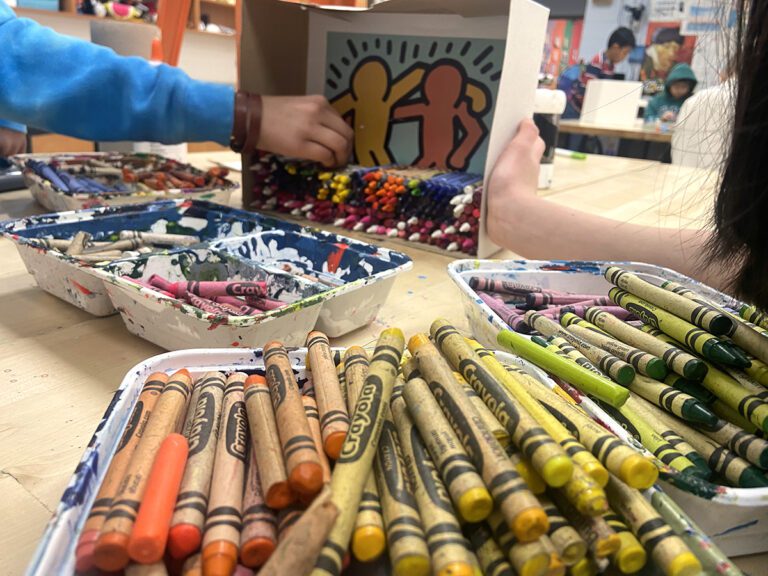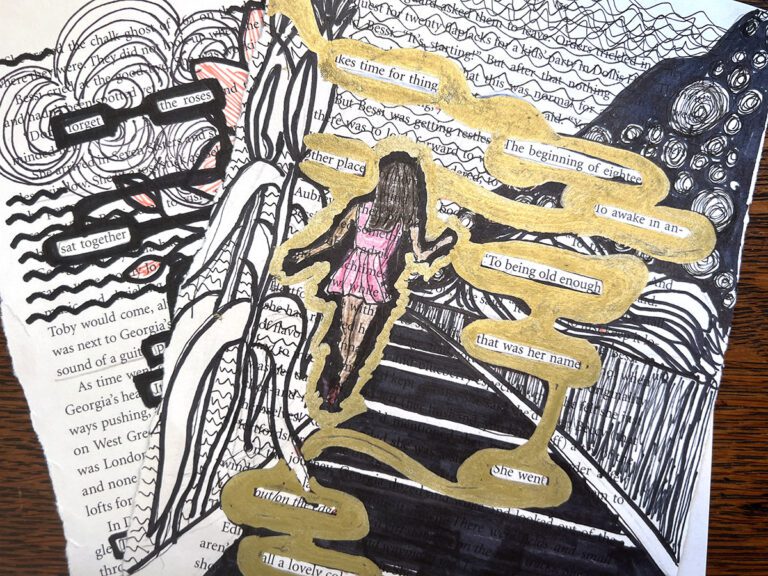Out of the millions of artworks created in human history, most adults and children can probably identify only a handful: The Mona Lisa, Starry Night, Nighthawks, The Persistence of Memory, or maybe, A Sunday Afternoon on the Island of La Grande Jatte. As art teachers, we may even include some of these masterworks in our lessons. After all, they serve as cornerstones and gateways into the realm of art and art history. However, there are so many wonderful lesser-known pieces you may want to add to your classroom repertoire.
Add these five obscure artworks to your repertoire for personal artmaking inspiration or future lesson planning.
Note: Peruse the links below to determine if they’re appropriate to share with your students.
1. Hilma af Klint’s, The Ten Largest, No.7, Adulthood, 1907

Recently, Hilma af Klint’s work has gained more notoriety. The documentary, Beyond the Visible – Hilma af Klint, details her artmaking process and some of the many challenges she faced. Predating other abstract artists like Piet Mondrian and Wassily Kandinsky by five years or more, her work is now regarded as the first abstract paintings created in art history.
Rewriting the history books is not the only interesting thing about her. She created most of her works about realms humans cannot experience with the senses. She claims to have been guided by spirits that gave her details on how to create these magnificent works of art. The Ten Largest are some of the more concrete examples of the artist’s collection. These paintings represent various stages in a person’s life such as childhood, youth, adulthood, and old age. The Ten Largest are aptly named since they are large-scale paintings and there are ten of them in the series.
The next time you make abstract art with your students, consider including a piece by Hilma af Klint.
2. George Catlin’s, Shón-ka-ki-he-ga, 1832

George Catlin is an artist best known for his depictions of Native American life in the United States. At 34, he abandoned a legal career to paint portraits of Native Americans. While Catlin did go bankrupt, he left a legacy unmatched by any artist of his time. In addition to his paintings, he came up with the idea to make a national park system.
The details of the Grand Pawnee chief, Shón-ka-ki-he-ga, are exquisite. There is a sense of immediacy in the portrait, especially in the earrings and necklaces. The capturing stare of the chief makes it feel as if he is looking right at the viewer.
Catlin’s paintings are ideal for a lesson on portraiture or Native Americans. You may even want to mention him to your social studies teacher and collaborate on a lesson!
If you are looking for more, take a look at the Lesson, Past Portraits: Reimagined in FLEX Curriculum.
3. Tuc d’Audoubert Bison, 12,000 BCE

Caves in France have many must-see Paleolithic artworks. As art teachers, we tend to gravitate toward the stunning Lascaux Cave paintings in Montignac, France. While these are magnificent examples of Paleolithic art, south of Montignac is another trio of caves, one of which is called Tuc d’Audoubert. Inside the cave are countless examples of Paleolithic artworks and engravings. In the far reaches of the cave, lies a pair of beautifully sculpted bison.
Made of clay, these treasures provide a glimpse into the minds of Stone Age sculptors. The specimens are realistically modeled with their slight humps and jagged fur. These ancient artists took great care in their observations of the natural world.
This pair of bison is fantastic when discussing Paleolithic artworks, or if you’re looking for clay inspiration.
4. The Lost Murals of Princess Yongtai, 705 CE

The Tang Dynasty was one of China’s most revered. From 618-to 907 CE, the Tang Dynasty had an empire larger than Rome. During this time, the Tang Dynasty developed a flourishing artistic period. This is mostly attributed to the success of the Silk Road which opened trade routes with the Western world.
In the 1960s, archaeologists unearthed and excavated a forgotten tomb from this time period. They discovered stunning murals depicting daily life in China during this reign. The tomb also includes a fresco on the ceiling that shows tigers, dragons, and an astronomical event. The tomb is that of Princess Yongtai who was allegedly poisoned by her grandmother, Empress Wu Zetian.
These murals are a great lead-in to a project on the Tang Dynasty, mural paintings, or even Chinese Art. If you want to know more about the lost mural paintings check out this documentary!
5. The Mask of Iyoba, 16th Century

The Mask of Iyoba, also known as the Queen Mother Pendant Mask is a remarkable example of Benin mask carving. The rarity of the mask comes not only from its delicate depiction of a female face but also from its well-preserved state. The mask is made of ivory which is a very brittle material.
Carving a mask out of ivory is now out of fashion and illegal, but it held a strong significance to the Edo people in the 1500s. White, the color of ivory, is linked to Olokun, god of the sea. Olokun is a source of great wealth and fertility to the people of Benin.
In addition to its white color and ivory construction, the mask contains other culturally significant details. Around the head and neck of Iyoba are the stylized characters of mudfish. The mudfish is known as a liminal animal, which means it dwells in the physical and spiritual world. An Oba or leader of the Benin people must be liminal as well. The inclusion of the mudfish would have been highly regarded and respected as a direct link to the Oba.
However, Ivory wasn’t only valuable to the Beninese, it was also highly valued by the Portuguese and other European powers. The Beninese traded with the Portuguese, who envied products made of ivory. This made the mask and other items like it very attractive to the Portuguese and other Western people.
This piece can be used in an African mask-making project. Here is a fun and thrifty lesson idea for making papier-mâché masks to get you started.
Hopefully, one, two, or even all five of these artworks are new to you! These artworks encompass a variety of cultures, time periods, and styles. They are solid pieces to expand your art history knowledge and inspire your own artmaking. They are also fun to throw into future art lessons. If you love infusing art history into your classroom and want to learn more, AOEU offers a course specifically designed for that. Take a look at Integrating Art History to discover how to effectively bring art history into your curriculum.
For more exciting artist and artwork compilations, check these out:
- 9 Artists Who Love Cats: Leaning Into an Art Teacher Stereotype
- Don’t Miss These 30 Artists That Bridge SEL and Art!
- Rethinking Art—13 Innovative Artists Who Play With Form and Function
- The Top 10 Contemporary Artists to Teach Alongside Traditional Artists
Which artwork did you recognize?
What are some lesser-known works that you enjoy?
How can you integrate some of these pieces into your art curriculum?
Magazine articles and podcasts are opinions of professional education contributors and do not necessarily represent the position of the Art of Education University (AOEU) or its academic offerings. Contributors use terms in the way they are most often talked about in the scope of their educational experiences.





